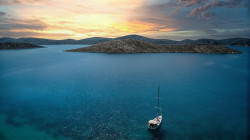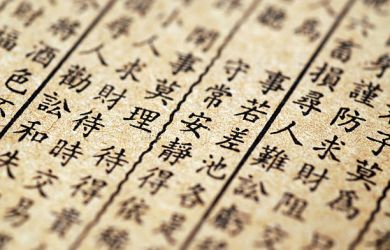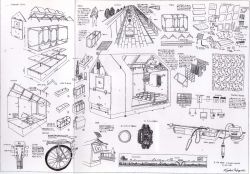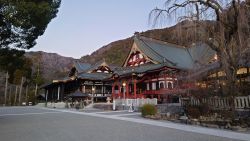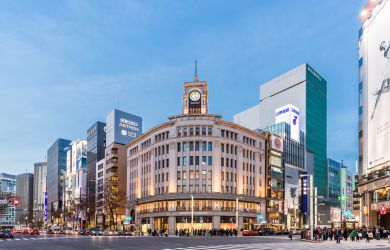
September 12, 2008
Kyoto’s Hidden Palaces
Escape the tourist mobs at former imperial villas
By Metropolis
Originally published on metropolis.co.jp on September 2008

Photos by Alena Eckelmann
The white gravel is crunching noisily under my feet as I stroll leisurely through expanses of green in Kyoto’s Imperial Park. My attention is directed to the huge earthen walls beyond which one cannot go without a permit. I am trying to steal a glimpse through a crack in the wood of one of the massive gates that keep the area a secret. This is Kyoto’s Imperial Palace, one of a number of Imperial Household establishments in the ancient capital that are restricted sites. I am intrigued and decide to investigate.
The guard at the gate directs me to the Imperial Household Agency office in the northwest corner of the park. A “commoner” who has never had any dealings with the royals, I enter the building with reverence. An authoritarian clerk promptly tells me to fill out a form and to show my passport. Which one of the sites do I want to visit? All of them, I say. She raises an eyebrow but clicks away on her computer and finds me some available spots. I book my entry and leave in anticipation of seeing something few Kyoto tourist have seen.
The next day I am back at the gate to the palace. This time, the guard checks my permit and waves me through, and I am directed to a room where a group of tourists has gathered, patiently waiting for the guide while watching a video that explains the rules of the visit. We are cautioned not to take too many photographs, as this would delay the strict schedule. Then the guide appears and our group sets of in single-file, followed by a guard watching our every step and urging us to keep moving. Visitors are not allowed to walk alone or wander off. This seems a small sacrifice for being allowed to see the places where Japan’s royals lived, ruled and played.

Photo by Alena Eckelmann
The present Kyoto Imperial Palace dates from the mid 19th century, as previous structures were destroyed by fire and rebuilt many times. The main building is the Shishin-den (Hall for State Ceremonies), an imposing one-story affair built purely out of wood with a hipped and gabled roof, flanked by a sakura and an orange tree (tachibana). The hall is set in an expansive courtyard laid out with white gravel meticulously raked in long lines. It played a prominent role in the coronation of Japan’s rulers—even after 1869, when the capital and the Imperial Court were moved to Tokyo. Both the Taisho (1912-1926) and the Showa (1926-1989) emperors were enthroned here.
Indeed, regal history permeates the entire area. One can admire the Seiryo-den (emperor’s residence), the Kogosho (court room), the Ogakumonjo (library) and Oike-niwa (garden). Fans of architecture will appreciate the fact that these buildings represent a mix of traditional Japanese styles. It is possible to imagine court life even better after reading Murasaki’s The Tale of Genji, which mentions Seiryo-den.
Sento Imperial Palace and nearby Kyoto Omiya Imperial Palace are also located in the Imperial Park. The former served as a residence for retired emperors, while the latter was used by the empress dowager. Due to fires and demolition, there is not much left from the buildings of Sento Imperial Palace except for two elegant tea pavilions. Omiya Imperial Palace, however, is still used by the imperial family during visits to Kyoto.
The highlight of the compound is a huge garden with two connected ponds. The shoreline of the Southern Pond consists of an amazing 111,000 cobblestones, apparently transported there for one sho (1.8 liters) of rice each. The Northern Pond is a natural setting that blends in with the landscape of Mt Higashiyama in the distance. The garden is a feast for the eyes during all seasons, thanks to the wisteria, sakura and maple trees.
Shugakuin Imperial Villa at the foothills of Higashiyama was built in the 1650s as a royal pleasure garden. Three detached compounds are situated at different altitudes, connected by pathways and surrounded by rice fields. There is an excellent view of sacred Mt Hiei to the northeast of the city. Nature feels close yet distant at the same time. This principle of borrowed natural scenery (shakkai) is popular in Japanese garden design, and at Shugakuin visitors can experience it firsthand. The upper villa’s garden is also a prime territory to check out fall foliage.
The star of all imperial places in Kyoto, though, is Katsura Imperial Villa in the southwest corner of the city. Its garden, built by Prince Toshihito and expanded and completed by his son Toshitada in the middle of the 17th century, is celebrated as one of the most gorgeous in Japan. The villa has managed to avoid damage from fire or any other causes, and we are privileged to see more or less the original.
At every turn of the garden path winding its way around a lovely lake, the panoramic scenery changes and surprises the visitor with unexpected views. Attention was paid to every little detail in the garden’s design, from the simple elegance of pavilions to the stone lanterns and washing basins to the path that features changing patterns of paving stones and stepping stones. This garden invites visitors to stroll, lingering here and there, and wallowing in nostalgic thoughts of the country’s past. No matter how many temples and shrines you have visited, you cannot claim to know Kyoto’s treasures unless you have seen the beauty of these secretive places.
The Kyoto Imperial Palace, Sento Imperial Palace, Katsura and Shugakuin Imperial Villas are open for tours every day, with the exceptions of the third Saturday of each month, Sundays, national holidays and the New Year holiday. Maps are provided upon registration at the Imperial Household Agency (075-211-1215). To get there from Kyoto station, take the subway to Imadegawa or the bus to Karasuma Imadegawa. In contrast to many temples in Kyoto that charge a hefty entrance fee, visiting these imperial palaces is free. However, numbers are limited and applications for entrance have to be made in advance (in person or online: http://tinyurl.com/kunaicho). Tours last 50-75min and take place twice a day. They are usually in Japanese, but a free leaflet and a detailed guidebook (¥200) are available in English for each site. More information can be found on the Imperial Household Agency website (www.kunaicho.go.jp/eindex.html).

photos by Alena Eckelmann
